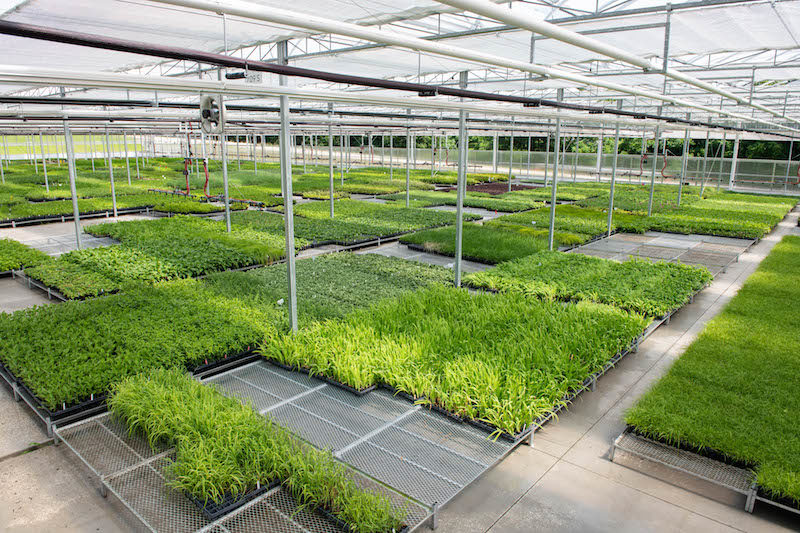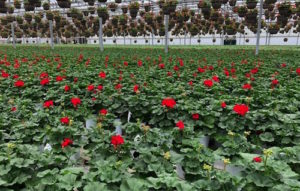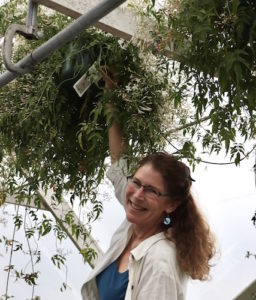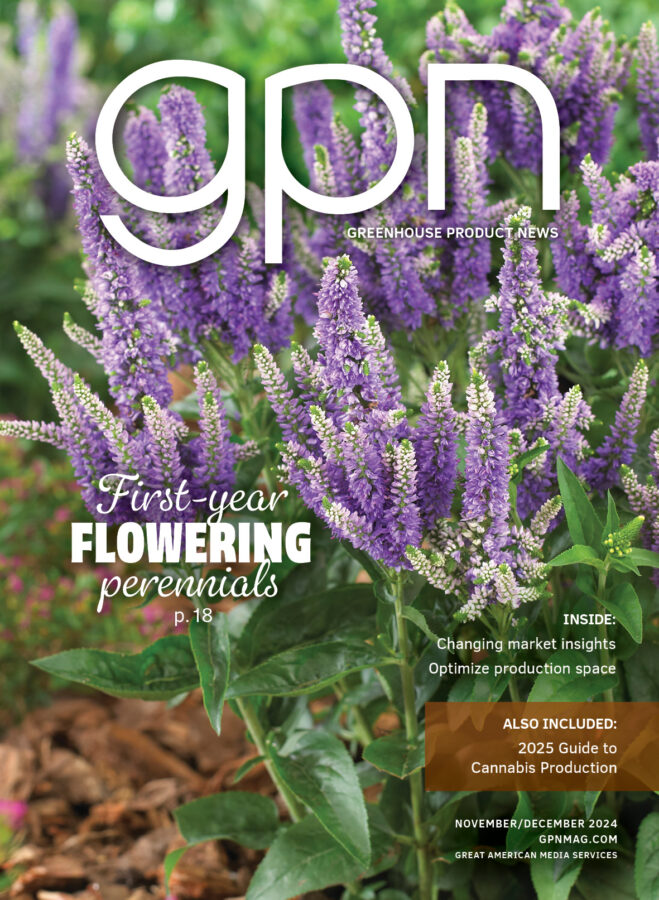
AI-Driven IPMs Are The New Normal
One of the numerous ways that the greenhouse industry mitigates the impact of climate change is the area of pesticides. According to Californians for Pesticide Reform (www.pesticidereform.com), “More than 200 million pounds of agricultural pesticide active ingredients are applied to California fields each year, of which more than 40 million pounds are fumigants — among the most hazardous and greenhouse gas-producing pesticides. Fumigant use has been shown to contribute to nitrous oxide, a greenhouse gas 300 times more potent than carbon dioxide.”
If you’re not surprised by the 200 million-pound figure, learning that fumigants are 300 times more deleterious to greenhouse gas has to be an eye-opener.
An IPM Plan
CEA operators have come to embrace IPM as a preference by consumers for pesticide-free plants. Matt Foertmeyer is the head grower at Foertmeyer & Sons, which operates 16 acres of greenhouses at two locations in Ohio. About five years ago, amid the negative publicity concerning bees and neonicotinoids, Matt decided that their business model of providing plants for school fundraisers had to be free of any danger to children.
 “Four years ago, we moved out of using pesticides and into an IPM operation,” Foertmeyer says. “When you switch to biocontrol, you have to change the way you approach things from reacting to a problem to constantly getting ahead of the curve, anticipating where the problem will be, and then applying the beneficial insects in advance of a problem. In the past, I would see a pocket of aphids over here and just spread pesticides on the whole crop. Now I let the beneficials do their job and, until they do, I make sure it doesn’t get out of hand.”
“Four years ago, we moved out of using pesticides and into an IPM operation,” Foertmeyer says. “When you switch to biocontrol, you have to change the way you approach things from reacting to a problem to constantly getting ahead of the curve, anticipating where the problem will be, and then applying the beneficial insects in advance of a problem. In the past, I would see a pocket of aphids over here and just spread pesticides on the whole crop. Now I let the beneficials do their job and, until they do, I make sure it doesn’t get out of hand.”
With Matt, as well as other growers, it’s clear that employing an IPM
program is a tactical war between the grower and the pests. You’re
constantly deploying a different set of troops in anticipation of an invasion
by a different unwanted pest. If the grower reacts too early, his troops
don’t have enough food to eat. If the grower deploys her troops too late,
they are overwhelmed by the enemy. Beneficials have already changed
the industry and I suspect the increase in granularity from artificial
intelligence (AI) monitoring will induce another wave of adoption allowing
applications to be better timed and more precise.
“One thrips adult can become 5,800 thrips in 50 days,” explains Foertmeyer. “Ron Valentin of BioWorks told us when we started that basically, we have a six-day window from the time a thrips lays an egg until it turns into a pupa. Six days. If you miss that stage, you’re into the adult stage, but there’s also the beneficial insect orius, which does a wonderful job in controlling the adult thrips. The key is, you must have them present in advance. It’s not the same as a pesticide, which can be sprayed in less than two hours.”
Growers who make the change find that IPM can be just as effective as traditional pesticides and it coincides well with people demanding more organic food and less chemically grown food. The legalization of cannabis has only highlighted the importance of reduced pesticide use. Consumers don’t want to ingest chemicals at the same time they’re opting to use cannabis derivatives as a healthy alternative to pharmaceuticals.
“When we started almost 40 years ago, there were no pesticides allowed on herb crops, so we were accustomed to farming like this,” shares Allison Kurtz of Sound Horticulture in Washington. “In the last five years, we now have biopesticides and the germ tube of the spore will find its way into the insect and kill it from the inside out. We can use a beneficial insect program with growers of cannabis and edibles, and if we need more pest control, we can use a biopesticide that is a mycoinsecticide.”
Monitoring Remotely

With these tools, the traditional sticky yellow card and scouting may be up for review, similar to 10 years ago, when the concept of IPM instead of pesticides was considered avant-garde. COVID-19 will hasten the adoption of technology designed to reduce the daily interface of large teams of people, any one of whom could seriously imperil a growing operation by testing positive for the disease.
Kurtz addresses the issue of solving problems remotely. “If one of our growers has an AI program that identifies pest problems, we can do something about it. We can look at a facility and say to the grower, we think we see a problem in a particular house, in a particular bay and, on a particular table, and we can see all this information from our remote crop walk. Then, we have the time to employ beneficial insects instead of spraying pesticides.”
Four months ago, this would have been an entirely different focus but with the impact of COVID-19, the new normal is changing the face of the agricultural industry. The pandemic has, in a sense, put the greenhouse industry on steroids. The long-haul transportation of fruits, vegetables and ornamentals is dependent on packing, loading, driving and unloading, all of which necessitate direct contact. Indoor growing significantly reduces all these components, in particular, fields of laborers harvesting crops.
Gordon Daniel Rowe III is responsible for Special Operations at North Creek Nursery, a wholesale propagation nursery in Pennsylvania. He addressed the issue of IPM in his greenhouses.
“The likelihood of me picking up a small thrips infestation with all the 30 to 40 cards that I am looking at as I move down the rows, well, more than likely I’m not going to catch that one. But, if the cameras are looking at the cards and catching the first one, that puts us so far ahead of the game because we don’t yet have a substantial population to deal with. If you have a really good IPM in place and you get an alert that a thrips problem is evident, then I have a big jump on that.”
None of the growers I spoke with suggested that AI would replace all labor and, in fact, one suggested he would merely shift people to getting more product out of the door — there’s a labor shortage. His rationale was the greenhouse could finish more plants, pick up more flats and ship more product.
Rowe offered his assessment of the value of artificial intelligence in a greenhouse. “The impact on our bottom line is if we shrink those threshold levels for pests through the use of AI, we get an earlier detection because at that point the population of pests is so small,” he says. “In that case, we definitely are going to use fewer inputs and we’re going to reduce our production costs. It would produce an increase in efficiency and a decrease in our dump rate, and that would result in an increase in our profit margin.”
The need for technology both to increase efficiency and to reduce the number of touches between hands is paramount given the financial impact of the recent shut down and the concern of a future pandemic. Consumers drove the change to growers employing IPMs. AI will drive a similar change for three main reasons: 1) By detecting infestations sooner, it significantly reduces the costs of any chemical inputs. 2) Artificial intelligence allows growers to shift labor from repetitive tasks such as crop walks, to revenue-producing tasks that generate more production. 3) AI helps growers optimize their yield forecasts, thus reducing the amount of product that is wasted or sold below value.


 Video Library
Video Library 



















